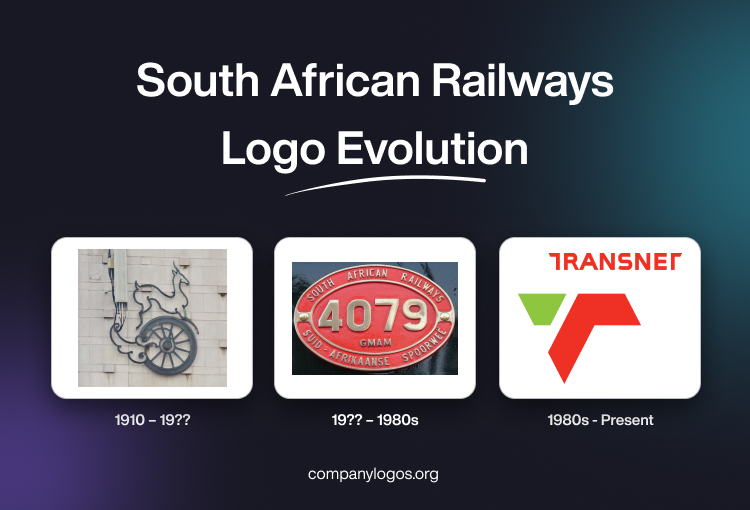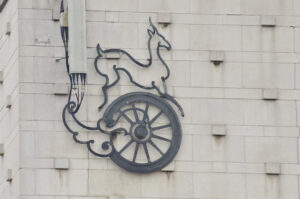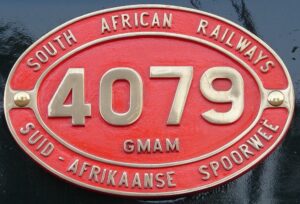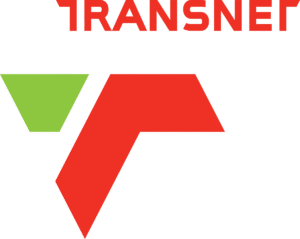
South African Railways (SAR) has played a vital role in the economic and social development of South Africa since its inception in the early 20th century. It was established in 1910 after the unification of the country’s colonial rail systems. In fact, SAR became the state-owned entity responsible for operating and managing the national railway network. The railway system facilitated the movement of goods and passengers across vast distances and supported the growth of industries such as mining, agriculture, and manufacturing.
Over the years, the network has undergone several transformations. These include the reorganisation of SAR into Transnet. There is sketchy information about the various logo changes made by South African Railways. The article attempts to trace the evolution of the South African Railways since its inception in 1910, among other details.
The Genesis of the South African Railways (SAR) (1910 – 19??)
The original logo of South African Railways featured a wheel motif symbolising the wheel of a railway engine in green with an antelope astride it also in green. The wheel was attached to a hollow ornate structure that symbolised the piston. Incidentally, there is no record of any wordmark accompanying it.

(19?? – 1980s)
The next logo change saw the geometric shape of an ellipse carrying the insignia of the South African Railways along the edges, especially at the top and bottom. The wordmarks and the outlines were mostly engraved in metal, while the background was mostly red. Also, the centre of the ellipse featured numbers depicting the locomotive and class. These numbers used to change for every locomotive.

(1980s – Present)
During the eighties, the South African Railways was restructured into Transnet. The logo featured the combination of a graphical emblem and the wordmark. The emblem consisted of two graphical elements – a smaller inverted trapezoid in green and a wide two-dimensional stripe in red. At the top of this emblem appeared the wordmark “TRANSNET” in red uppercase, where the horizontal bars on top of the letters’ “T” were incomplete and had diagonal cuts at their ends.

The Elements of the South African Railways Logo
Font
The logo used by the South African Railways, especially the Transnet and Spoornet, uses a modern sans-serif typeface. The typeface reflects a shift towards a contemporary and business-oriented image.
Colour
The traditional logos used by the South African Railways employed gold, yellow, green, and black to symbolise national identity. However, the latest logos, especially under Transnet and Spoornet, use colours such as green, red, black, and white.
The History of South African Railways
The first railway locomotive arrived in South Africa in 1858. The earliest railway line, which was a short 3.2 km stretch, opened on 26 June 1860. It linked Durban with Harbour Point and was operated by the Natal Railway Company. The construction of the Cape Town–Wellington line began in 1858, with the first section to Eerste River opening in 1862. In 1872, the Cape Government Railways was established, which accelerated railway expansion in the region.
Both Natal and Cape authorities adopted the 3 ft 6 in “Cape gauge” to better navigate the country’s rugged terrain. It set a standard for future rail development. By the late 19th century, several colonial railways existed, such as the CGR in the Cape, Natal Government Railways (NGR) in Natal, and the Netherlands-South African Railway Company (NZASM) in the Transvaal. Railways were extended to support mining (gold and diamonds), agriculture, and trade. Railway lines reached key towns such as Kimberley, Johannesburg, and Pretoria and were extended toward Mozambique to gain access to ports.
While private companies played a role, most major expansions were government-driven due to the high costs and need for infrastructure investment. In 1910, the four provinces merged to form the Union of South Africa, and so did their railways. Thus, South African Railways (SAR) was established, which marked the start of a unified, state-run railway network. SAR oversaw extensive new construction, wherein it linked remote regions and integrated the national economy. By the 1920s, the SAR also inherited railways in South West Africa (now Namibia).
The main line from Durban to Johannesburg became a critical artery, with electrification beginning in 1924 and completed by 1964. At its peak, the South African railway network extended over 24,000 km, which was one of the largest in the world. The system saw the introduction of electric traction, double tracking, and computerised central traffic control, especially on major corridors like Durban–Johannesburg.
SAR also managed harbours by integrating rail and maritime logistics under the South African Railways and Harbours (SAR&H). In the 1980s and 1990s, SAR&H was restructured into Transnet, a state-owned company. The rail division became Spoornet (now Transnet Freight Rail), which focused on freight, while Metrorail was established for commuter services. Today, the South African Railways remain vital for freight and passenger transport, even though the network has contracted from its historical maximum. The network faces modernisation, safety, and service reliability as ongoing challenges and priorities.
Interesting Facts About South African Railways
- South Africa’s first public railway was a short 3.2 km line between Durban and The Point. It was opened on 26 June 1860 by the Natal Railway Company and was built to standard gauge (1435 mm). However, it was changed to the narrower Cape gauge (1067 mm), which became the national standard.
- The first locomotive in South Africa was called “Blackie”, which played a key role in early railway construction and is now preserved as a historic artefact.
- Cecil Rhodes, who was a prominent figure in South African history, envisioned a railway that stretched from Cape Town to Cairo. While the “Cape to Cairo” railway was never completed, the South African network did reach as far north as Victoria Falls by 1904.
- In 1860, South Africa hosted its first royal train journey when the prince (later King Edward VII) travelled from Durban to The Point at a record speed of 64 km/h. It thrilled the local press and dignitaries.
- At its peak, the South African rail network extended over 24,000 km, which made it one of the largest in the world and the most highly developed on the African continent.
- South Africa began electrifying its railways in the 1920s. This started with the Colenso Power Station and the introduction of the Class 1E electric locomotive. By 1964, the Durban to Johannesburg line was fully electrified and double-tracked, with advanced central traffic control.
- The railways were crucial for transporting diamonds, gold, and agricultural products. It fuelled the economic expansion of the country and linked remote regions to major ports.
- The railways have been state-owned since the early 20th century, first as South African Railways and Harbours (SAR&H) and later as Transnet Freight Rail. Some small sections have recently been privatised, but the core network remains government-controlled.
- TheSouth African Railways feature a variety of iconic steam and electric locomotives, which include the “Natal” and “Wellington”. These are now preserved as part of the country’s rich railway heritage.
- The railway system has faced issues such as lack of maintenance, cable theft, and looting, particularly during the COVID-19 pandemic. These did impact reliability and safety in recent years.
- South Africa’s urban commuter rail service, Metrorail, is a vital part of daily life in cities like Cape Town, Johannesburg, and Durban. It carries millions of passengers annually.
Finally
The South African railway logo has evolved to adopt sleek, modern corporate identities. Each transformation reflects broader changes in South African society, governance, and the global context in which its railways operate. While the logo’s visual language has shifted, it continues to symbolise the vital role of rail in connecting the country’s people and economy.